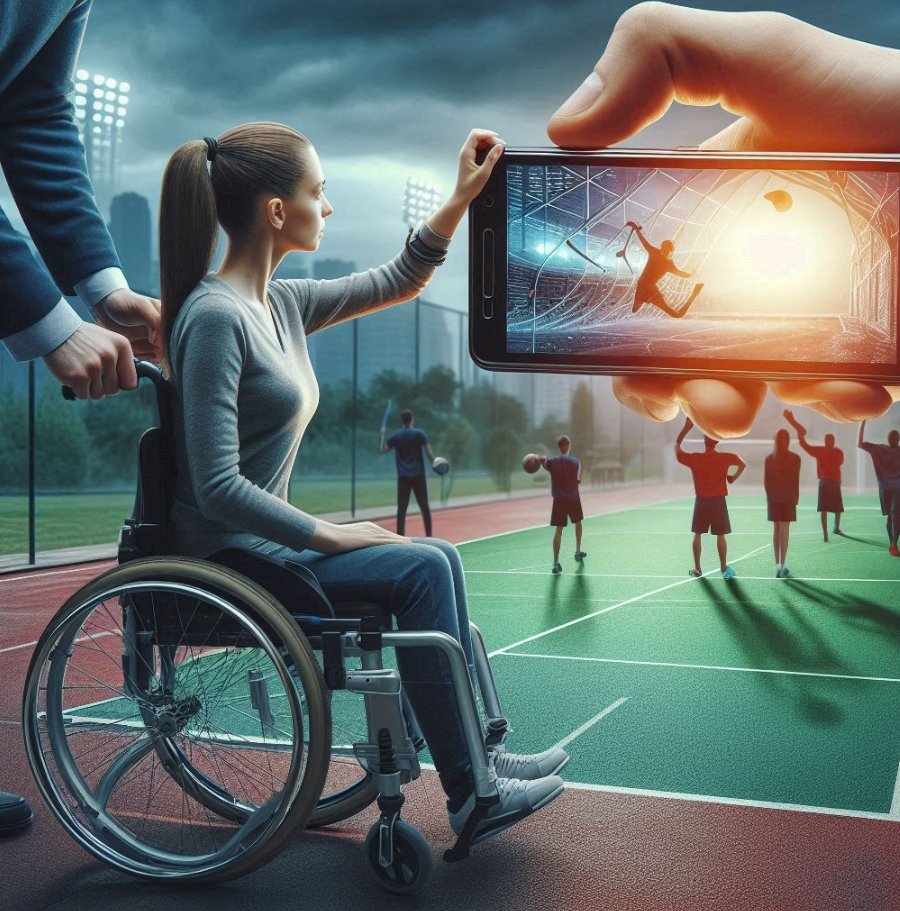For individuals with disabilities, participating in sports and recreation can be a transformative experience, fostering physical health, mental well-being, and social connection. While high-tech assistive devices often grab headlines, low-tech solutions can be equally effective and accessible. This article explores the world of low-tech assistive technology, empowering individuals to enjoy the thrill of sports and recreation.
Key Highlights
- Low-tech assistive technology provides simple, affordable solutions for individuals with disabilities to participate in sports and recreation.
- From adaptive equipment modifications to accessible environments, low-tech options enhance inclusivity and independence.
- Overcoming challenges like awareness and stigma is crucial for promoting widespread adoption of low-tech assistive technology.
Image Credit Goes to Florida Vision Technology
Understanding Low-Tech Assistive Technology
Low-tech assistive technology refers to simple, affordable, and readily available vision tools or modifications that enhance the ability of individuals with disabilities to participate in sports and recreation. Unlike their high-tech counterparts, these devices do not require complex training, specialized equipment, or advanced technology. Instead, they focus on practical solutions that can be easily implemented.
Benefits of Low-Tech Assistive Technology
Low-tech assistive technology offers numerous advantages for individuals with disabilities:
- Accessibility: These devices are often inexpensive and readily available, making them accessible to a wider population.
- Simplicity: Their straightforward design and operation require minimal training, allowing for quick adaptation.
- Durability: Low-tech solutions are typically robust and can withstand the rigors of sports and recreational activities.
- Affordability: Compared to high-tech alternatives, low-tech assistive technology is often more budget-friendly.
Low-Tech Assistive Technology in Action
Let’s explore some practical examples of low-tech assistive technology that can enhance sports and recreation experiences:
Adaptive Equipment Modifications
- Wheelchair Modifications: Simple modifications such as wheelchair basketball hoops, wheelchair tennis rackets, or specialized seating can enable wheelchair users to participate in various sports.
- Handle Extensions: Adding extensions to sports equipment like rackets, clubs, or fishing rods can improve grip and control for individuals with limited hand strength or dexterity.
- Spool and Line Holders: These devices can help individuals with limited hand function enjoy fishing.
- Protective Gear: Custom-fitted or modified protective gear can ensure safety during sports participation.
Environmental Adaptations
- Accessible Facilities: Ensuring ramps, accessible restrooms, and changing areas are available can make sports and recreation facilities inclusive.
- Adaptive Playgrounds: Installing inclusive playground equipment, such as sensory play areas and accessible swings, can create welcoming spaces for children with disabilities.
- Adapted Sports Fields: Modifying sports fields with accessible pathways, wheelchair-friendly surfaces, and appropriate markings can enhance participation.
Assistive Devices for Specific Sports
- Swimming: Pool noodles, flotation devices, and water-based walkers can support individuals with varying abilities in the water. Additionally, virtual assist devices can offer real-time feedback and guidance to enhance swimming techniques and safety.
- Cycling: Handcycles, tricycles, and bike trailers provide alternative cycling options for individuals with physical limitations. Virtual assist devices can be used to create customized cycling routes and monitor performance metrics to further tailor the experience to individual needs.
- Running: Running aids, such as canes or crutches with specialized attachments, can assist individuals with mobility impairments. Virtual assist devices can offer virtual coaching and adaptive running programs to improve technique and endurance.
Overcoming Challenges and Promoting Inclusion
While low-tech assistive technology offers significant benefits, there are challenges to address:
- Awareness: Many people, including healthcare providers and sports organizations, may be unaware of the potential of low-tech solutions.
- Accessibility: Ensuring access to low-tech assistive devices requires collaboration between individuals with disabilities, healthcare professionals, and community organizations.
- Stigma: Overcoming societal attitudes and prejudices towards individuals with disabilities is essential for fostering inclusive sports environments.
To promote inclusivity in sports and recreation, it is crucial to:
- Educate: Raise awareness about the benefits of low-tech assistive technology among the general public, healthcare providers, and sports organizations.
- Collaborate: Foster partnerships between disability organizations, sports governing bodies, and equipment manufacturers to develop and distribute low-tech solutions.
- Advocate: Advocate for policies and funding that support the integration of individuals with disabilities into sports and recreation.
Conclusion
Low-tech assistive technology has the power to transform the lives of individuals with disabilities by opening doors to the world of sports and recreation. By understanding the potential of these simple yet effective solutions, we can create more inclusive and accessible communities where everyone has the opportunity to enjoy the benefits of physical activity and social engagement.
